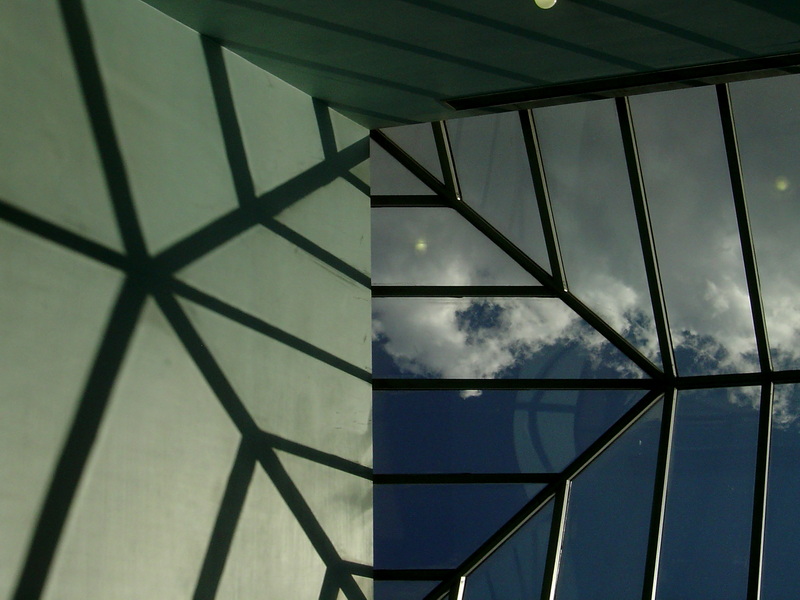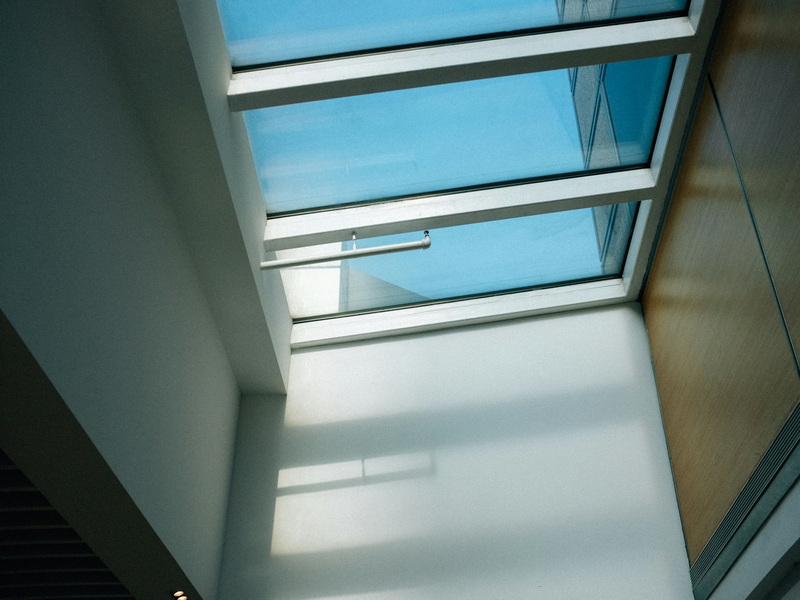English 




Views: 222 Author: Astin Publish Time: 2025-01-22 Origin: Site



Content Menu
● Understanding Energy Efficiency in Windows
● Advancements in Aluminum Window Technology
>> 2. Double and Triple Glazing
>> 3. Improved Sealing Techniques
● Myths About Aluminum Windows' Energy Efficiency
>> Myth 1: Aluminum Windows Are Poor Insulators
>> Myth 2: Aluminum Windows Cause Excessive Heat Loss
>> Myth 3: Aluminum Windows Are Only Suitable for Warm Climates
>> Myth 4: Aluminum Windows Lead to Higher Energy Bills
● Comparing Aluminum Windows with Other Materials
● Benefits of Choosing Energy-Efficient Aluminum Windows
>> 1. Cost Savings on Energy Bills
>> 3. Increased Property Value
● FAQs
>> 1. Are aluminum windows more expensive than vinyl?
>> 2. How long do aluminum windows last?
>> 3. What makes aluminum windows energy efficient?
>> 4. Can old aluminum windows be made more energy efficient?
>> 5. Do I need special maintenance for my aluminum windows?
In recent years, aluminum windows have gained popularity among homeowners and builders alike due to their sleek design, durability, and modern aesthetic. However, a common concern surrounding aluminum windows is their energy efficiency. Traditionally, aluminum was viewed as a poor insulator compared to materials like vinyl or wood. This perception has changed significantly with advancements in technology and design. This article explores the energy efficiency of aluminum windows, addressing myths, detailing the benefits of modern designs, and providing insights into their performance in various climates.

Energy efficiency in windows refers to the ability of a window to minimize heat transfer between the interior and exterior of a building. This is crucial for maintaining comfortable indoor temperatures while reducing reliance on heating and cooling systems. The effectiveness of a window's insulation is often measured using two values:
- U-value: This measures the rate of heat transfer through the window. A lower U-value indicates better insulating properties.
- R-value: This measures the resistance to heat flow; higher R-values indicate better insulation.
The frame material significantly impacts a window's overall energy efficiency. Aluminum windows have historically been criticized for their high thermal conductivity, which can lead to increased heat loss during winter and heat gain during summer. However, modern aluminum windows incorporate various technologies that enhance their insulating properties.
One of the most significant advancements in aluminum window technology is the introduction of thermal breaks. A thermal break is an insulating material placed between the interior and exterior parts of the aluminum frame. This barrier effectively reduces heat transfer, improving the overall energy efficiency of the window.
- Polyamide Thermal Breaks: These are commonly used in modern aluminum windows. They significantly lower the thermal conductivity of the frame, allowing for better insulation performance.
Modern aluminum windows often come with double or triple glazing options. These involve multiple panes of glass separated by insulating gas (like argon or krypton), which further reduces heat transfer.
- Low-E Glass: Low-emissivity (Low-E) coatings can be applied to these glass panes to reflect heat back into your home during winter while keeping it out during summer. This feature enhances energy efficiency by minimizing heat loss and gain.
Effective sealing around the edges of aluminum windows prevents air infiltration, which can lead to drafts and increased energy costs. Modern designs incorporate advanced sealing techniques that ensure a tight fit, further enhancing energy efficiency.
Aluminum's lightweight nature allows for larger glass areas without compromising structural integrity. This maximizes natural light while minimizing the need for artificial lighting during the day, contributing to overall energy savings.
Despite technological advancements, several myths persist regarding aluminum windows' energy efficiency:
While it's true that aluminum has higher thermal conductivity than materials like wood or vinyl, modern aluminum windows are designed with thermal breaks and high-performance glazing options that significantly improve their insulating properties.
Modern designs effectively prevent excessive heat loss through innovative engineering solutions such as thermal barriers and insulated glazing systems.
Contrary to this belief, properly engineered aluminum windows can perform well in diverse climates, including those with extreme temperature variations.
When installed correctly and maintained properly, aluminum windows can contribute to energy savings by optimizing thermal performance and reducing reliance on heating and cooling systems.

To better understand where aluminum stands in terms of energy efficiency, it's helpful to compare it with other popular materials like vinyl and wood.
| Feature | Aluminum Windows | Vinyl Windows | Wood Windows |
|---|---|---|---|
| Durability | High; resistant to warping | Moderate; can warp in extreme conditions | High; but requires maintenance |
| Energy Efficiency | Improved with thermal breaks | Excellent; naturally insulating | Good; but depends on treatment |
| Maintenance | Low; occasional cleaning needed | Very low; no painting required | High; needs regular maintenance |
| Aesthetics | Sleek and modern | Versatile; can mimic wood | Classic appeal |
| Cost | Moderate to high | Generally lower | Higher initial cost |
By reducing heat transfer, energy-efficient aluminum windows can lead to significant savings on heating and cooling costs over time. Homeowners may notice lower utility bills as a result of improved insulation.
Choosing energy-efficient windows contributes positively to environmental sustainability by lowering energy consumption. Reduced reliance on heating and cooling systems means a smaller carbon footprint for homeowners.
Upgrading to energy-efficient windows can enhance your property's market value. Potential buyers often prioritize homes with modern features that promise lower energy costs.
Energy-efficient aluminum windows help maintain consistent indoor temperatures throughout the year, contributing to a more comfortable living environment regardless of external weather conditions.
Aluminum windows have evolved significantly over the years, overcoming their historical reputation for poor energy efficiency through innovative technologies such as thermal breaks, advanced glazing options, and improved sealing techniques. While they may not outperform vinyl or wood in all aspects of insulation, modern aluminum windows offer commendable performance that makes them suitable for various climates and architectural styles.
When considering new windows for your home or building project, it's essential to weigh factors such as aesthetics, durability, maintenance requirements, and energy efficiency against your specific needs and preferences. With proper installation and maintenance, aluminum windows can be an excellent choice for those seeking both style and functionality while contributing positively to energy savings and environmental sustainability.

Yes, aluminum windows generally have a higher upfront cost compared to vinyl options due to their durability and aesthetic appeal.
Aluminum windows typically last between 20-40 years depending on maintenance and environmental conditions.
Modern aluminum windows are designed with thermal breaks, double or triple glazing options, Low-E coatings, and effective sealing techniques that enhance their insulation properties.
Yes! Upgrades such as adding weatherstripping or replacing single-pane glass with double-pane Low-E glass can improve their efficiency significantly.
While they require minimal maintenance compared to wood frames, regular cleaning is recommended to prevent corrosion or dirt buildup on the surface.
[1] https://ecochoicewindows.ca/energy-efficiency-in-aluminum-windows-myths-and-facts/
[2] https://beachbuilderssupply.com/the-high-quality-insulation-properties-of-aluminum-windows-for-summer/
[3] https://www.ecolinewindows.ca/aluminum-vs-vinyl-windows-comparison-costs-pros-and-cons/
[4] https://dtpalumn.com/how-aluminum-sliding-windows-solve-energy-efficiency-issues/
[5] https://ecochoicewindows.ca/aluminum-windows-energy-efficiency/
[6] https://www.technal.com/en/tme/informations/blogs/aluminum-window-design-enhancing-efficiency-with-thermal-breaks/
[7] https://www.windowanddoorshop.com/aluminum-windows-a-modern-solution-for-energy-efficiency/
[8] https://www.majesticdesigns.co.uk/news/are-aluminium-windows-energy-efficient/
[9] https://moxisys.com/thermal-break-windows-and-doors/
[10] https://paradigmwindows.com/vinyl-vs-aluminum-windows/
[11] https://todayshomeowner.com/windows/guides/vinyl-vs-aluminum-windows/
[12] https://www.supplyonlydoors.com/help-and-advice/how-to-insulate-aluminium-window-frames/
[13] https://www.thisoldhouse.com/windows/aluminum-vs-vinyl-windows
[14] https://www.sehbac.com/blog/are-aluminium-windows-energy-efficient
[15] https://rylock.co.nz/news/how-energy-efficient-are-aluminum-windows
[16] https://magicwindow.ca/blog/vinyl-vs-aluminum-windows-advantages-and-disadvantages/
[17] https://www.windowsonlineuk.co.uk/blog/are-aluminium-windows-energy-efficient/
[18] https://ekoplast-group.com/en/products/aluminium-windows/
[19] https://www.weldawindows.com/blog/2024-comparison-vinyl-vs-aluminum-windows/
[20] https://advancedwindowsusa.com/vinyl-or-aluminum-windows-which-is-better
[21] https://aluminiumwindowsanddoors.net.au/the-impact-of-frame-materials-on-the-thermal-insulation-properties-of-double-glazed-windows/
[22] https://conservationconstruction.com/aluminum-windows-are-not-energy-efficient/
[23] https://ewdcentre.co.uk/are-aluminium-windows-energy-efficient/
[24] https://www.energy.gov/energysaver/window-types-and-technologies
[25] https://jkrwindows.com/2023/05/22/energy-efficient-aluminum-window-replacement-options/
[26] https://amcaluminum.ph/how-energy-efficient-are-aluminum-windows/
[27] https://www.kanodwindows.com/data-proven-the-thermal-insulation-performance-of-aluminum-double-pane-windows-and-its-manifestations/
[28] https://esnaglass.com/aluminum/energy-efficient-aluminum-windows/
[29] https://www.doorandwindowexperts.co.uk/aluminium-windows/
[30] https://www.researchgate.net/publication/236502660_State-of-the-Art_Highly_Insulating_Window_Frames_-_Research_and_Market_Review
[31] https://www.poojasales.in/blog/advancements-in-aluminium-windows-hardware-technology/
[32] https://www.linkedin.com/pulse/what-benefits-energy-efficient-aluminium-ljaic
[33] https://capitalwindows.co.uk/how-do-aluminium-window-frames-affect-the-thermal-performance/
[34] https://www.linkedin.com/pulse/future-aluminum-windows-doors-trends-2025-2030-judy-huang-yni2c
[35] https://camelglass.co.uk/latest-news/maximizing-energy-efficiency-how-aluminium-windows-can-save-you-money/
[36] https://www.linkedin.com/pulse/thermal-insulation-aluminum-doors-windows-market-8ifec/
[37] https://qualitysealaustralia.com.au/energy-efficient-window-technologies/
[38] https://www.al-guard.com/articles/aluminum%20windows-aluminum%20doors-insulation%20window
[39] https://www.fixr.com/articles/vinyl-vs-aluminum-windows
[40] https://www.alunetsystems.co.uk/are-aluminium-windows-thermally-efficient/
[41] https://www.mdpi.com/1996-1073/15/10/3692
[42] https://ecochoicewindows.ca/energy-efficiency-in-aluminum-windows-myths-and-facts/
Top Aluminum Furnitures Manufacturers and Suppliers in France
Top Aluminum Furnitures Manufacturers and Suppliers in Spain
Top Aluminum Furnitures Manufacturers and Suppliers in Italy
Top Aluminum Furnitures Manufacturers and Suppliers in Germany
Top Aluminum Furnitures Manufacturers and Suppliers in Saudi Arabia
Top Aluminum Furnitures Manufacturers and Suppliers in Israel
Top Aluminum Furnitures Manufacturers and Suppliers in Indonesia
Top Aluminum Furnitures Manufacturers and Suppliers in Vietnam
Top Aluminum Furnitures Manufacturers and Suppliers in Malaysia
